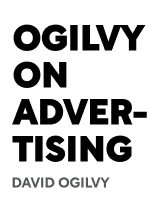

This article is an excerpt from the Shortform book guide to "Ogilvy On Advertising" by David Ogilvy. Shortform has the world's best summaries and analyses of books you should be reading.
Like this article? Sign up for a free trial here .
What is the advertising industry like? What kind of jobs are available in the advertising industry?
The advertising industry has grown over the last century. There are still major traditional ad agencies, as well as new opportunities in growing areas of marketing and advertising.
Read this advertising industry overview to learn more about working in advertising.
Advertising Industry Overview
In the previous part, we looked at the craft of advertising. Now we’ll zoom out and look at the domestic advertising industry as a whole from the point of view of employees, heads of agencies, clients, and the public. Then, we’ll look at international advertising.
At the time of the book’s writing, fewer than 100,000 people worked in advertising in the U.S. and 15,000 in Britain, but the ad industry wasn’t as unstable as newspapers would have you believe—papers reported only on accounts that moved, not the ones that stayed. Only 4% of accounts changed agencies per year, and of the 25 biggest agencies in 1972, 24 were still the biggest agencies in 1983.
Employees
First: If you’re not passionate about advertising, go do something else. Advertising pays well, but so do plenty of other professions that are easier and don’t require as much passion.
If you’re sure you want to work in advertising, it’s important to consider education, employers, positions, how to properly apply for a job, and how to keep it once you have it. Keep this in mind if you want to work in the advertising industry.
Education
At the time of the book’s writing, 87 U.S. universities offered undergraduate courses in advertising and some offered degree programs. However, many of the instructors didn’t have practical experience in advertising and didn’t do research, and the textbooks were bad. Therefore, the big agencies preferred to hire smart people with degrees in other fields, such as economics, and the people who studied advertising ended up at smaller firms.
Employers in the Advertising Industry
There are four types of employers in the advertising industry:
- Media outlets, such as radio stations that sell advertising space or time.
- Retailers, such as Sears, that have their own marketing departments and hire for jobs such as art director or copywriter.
- Manufacturing companies, such as Proctor & Gamble, that need brand managers.
- Advertising agencies, such as Ogilvy & Mather, that hire for a variety of positions.
Ogilvy only ever worked in agencies, so this is the only category his book covers in detail. Agencies tend to be interesting places to work—you can move internally, the culture is stimulating, and agencies often have an international presence, so you can work anywhere in the world (it helps if you speak the local language).
When you start your career, prioritize learning opportunities over salary. Look for an agency in the ad industry at which the top people teach interns, and the established employees are still open to professional development.

———End of Preview———
Like what you just read? Read the rest of the world's best book summary and analysis of David Ogilvy's "Ogilvy On Advertising" at Shortform .
Here's what you'll find in our full Ogilvy On Advertising summary :
- What the "father of advertising" has learned from his decades' of experience
- How to craft easy-to-understand ads that work
- The 6 pioneers of the advertising industry






